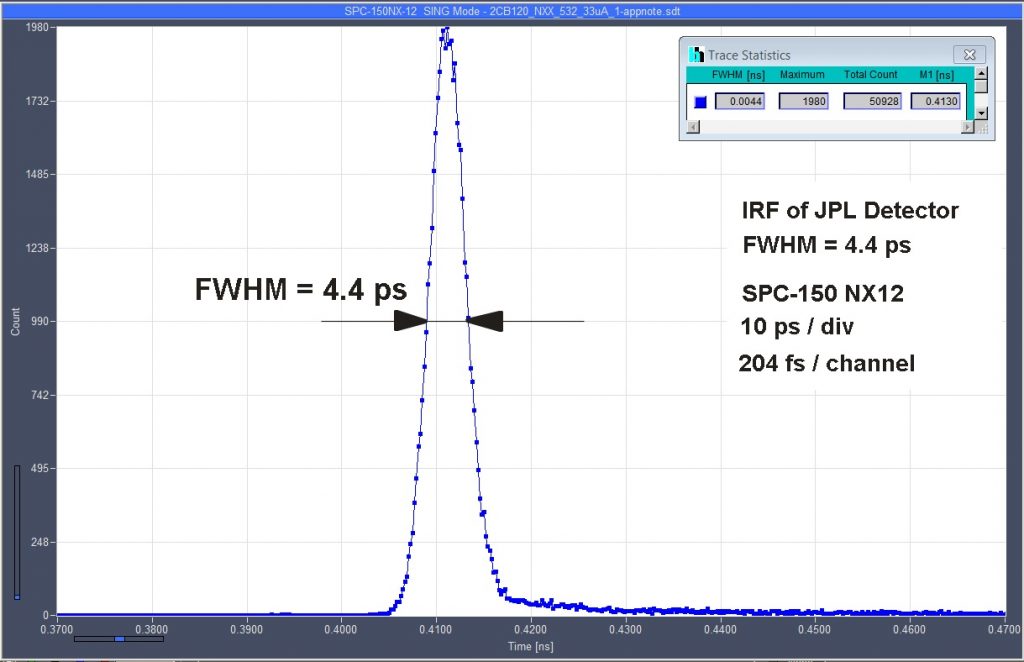A superconducting single-nanowire NbN detector (SNSPD) in combination with a bh TCSPC module has delivered an instrument response function (IRF) of 4.4 ps full width at half maximum (FWHM). The detector is a collaborative development of MIT and JPL (Jet Propulsion Laboratory). The ultra-fast TCSPC module is SPC-150NXX device of Becker & Hickl GmbH with 204 fs per time channel.
We have demonstrated the resolution of the system by recording the fluorescence decay of IR 1061, an infrared dye from Sigma Aldrich. The fluorescence lifetime of IR 1061 is extremely short. Nevertheless, the fluorescence decay was clearly resolved. Decay analysis with SPCImage delivered a fluorescence lifetime of 43.7 ps. The extremely narrow IRF allows to measure even shorter fl lifetimes.
Potential applications of the system are time-resolved detection of proton-transfer reactions or solvent-relaxation effects. Another application may be scanning of surface profiles. The time resolution of 4.4 ps does, in principle, resolve depth differences of 1.3 mm with a single detected photon in each pixel. With 1000 photons per pixel, the depth resolution would improve to about 40 µm.
For more information please see:
Application note: 4.4 ps IRF width of TCSPC with an NbN Superconducting Nanowire Single Photon Detector
Left: IRF of Detector-TCSPC combination (SPC-150NX). FWHM of IRF is 4.4 ps. Middle: Fluorescence decay of IR 1061, fluorescence lifetime 43.7 ps. Right: Data analysis with bh SPCImage. Blue dots: Data points, 204 femtoseconds per channel. Green: Instrument response function. Red: Fit with single-exponential decay model. Bottom curve: Residuals. The fluorescence lifetime is 43.7 ps.



